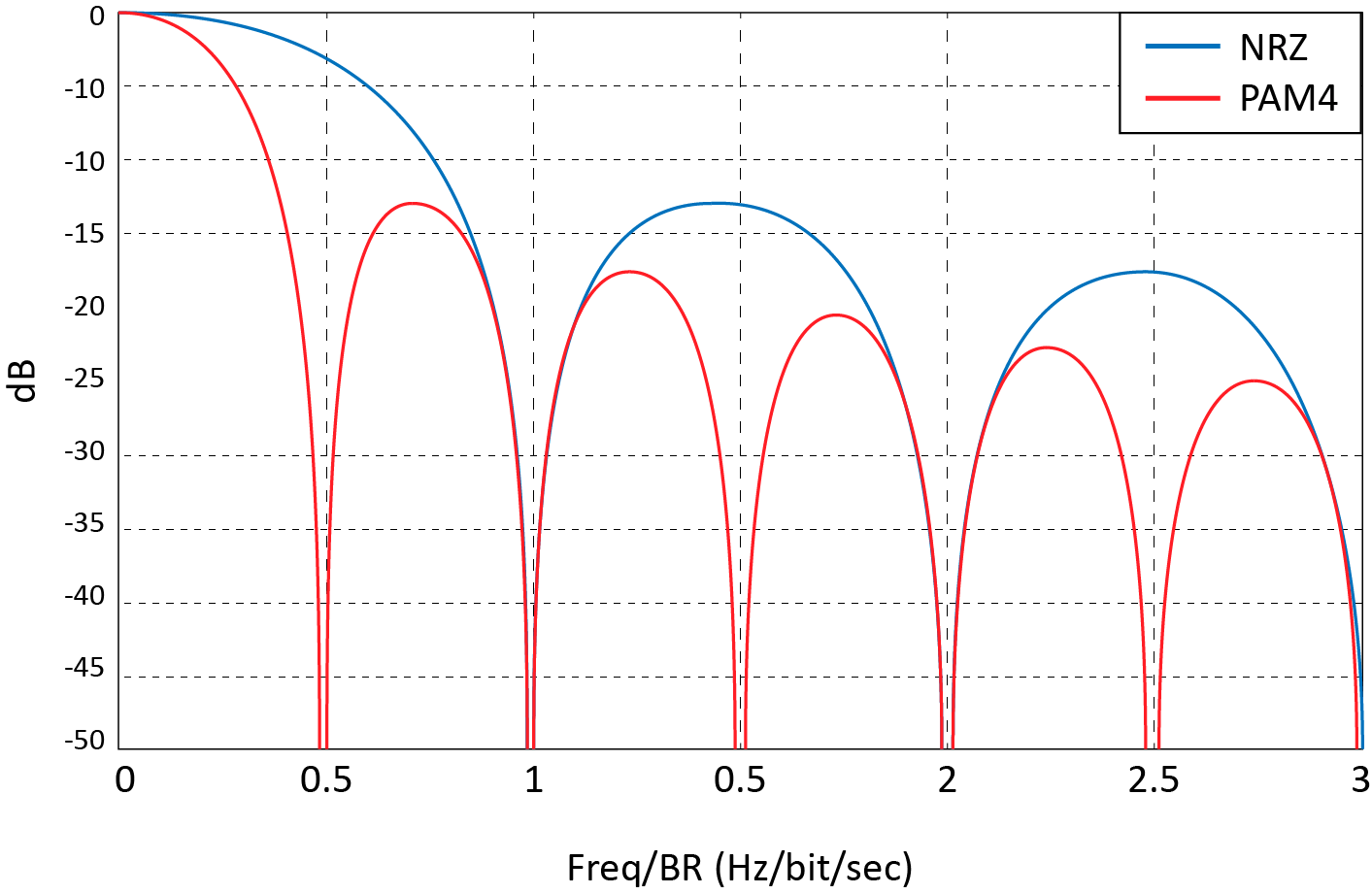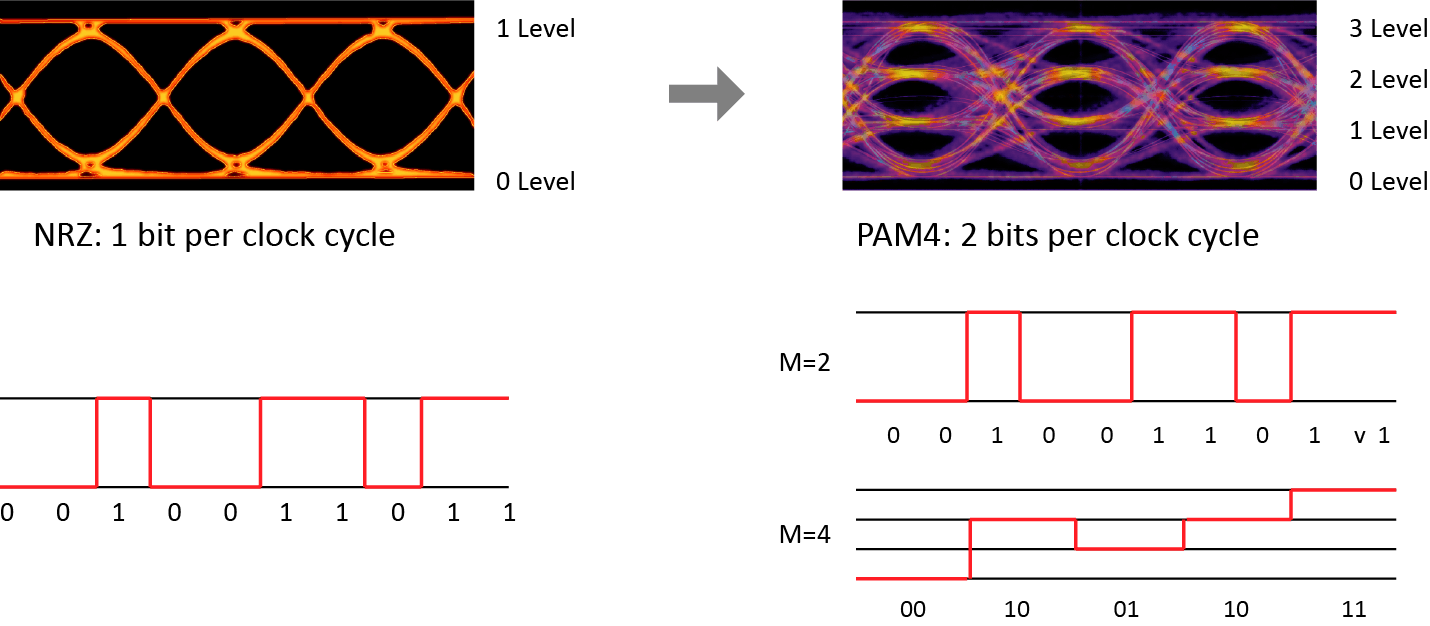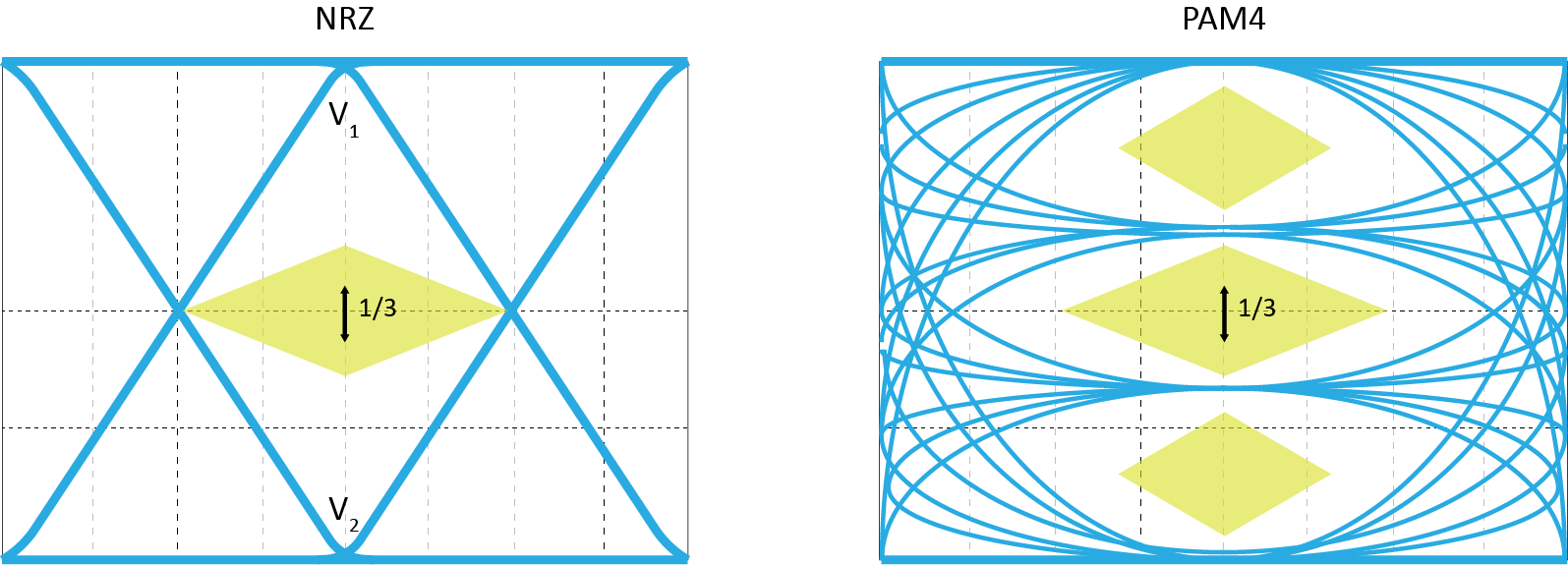Cloud computing and big data are driving the exponential growth of traffic and the rise of 400G Ethernet. With data center networks experiencing an increase in bandwidth needs, it is required for innovative technologies to meet these shifting demands.
Currently, there two signal modulation techniques that are being explored for next-generation Ethernet: non-return to zero (NRZ) and pulse-amplitude modulation 4-level (PAM4).
NRZ and PAM4 Basics
NRZ is a modulation method that represents the 1/0 information of a digital logic signal utilizing two signal levels. A negative voltage corresponds to logic 0, and a positive value corresponds to logic 1. For NRZ transmissions, the baud rate—the rate at which a symbol can change—equals the bit rate.
Advantages of NRZ:
- Good for short distance runs
- Throughput of 1 bit per Unit Interval (UI)
- Signal and Noise (SNR) = 0 dB
- Minimizes current change
PAM4 is a multilevel signal modulation that uses four different signal levels (0, 1, 2, 3). Each signal level can represent 2 bits of logic information.
Advantages of PAM4:
- Used in 400 gigabit Ethernet
- Can pull twice the signal vs. NRZ
- Operates on four levels vs. two levels
- Throughput of 2 bit per Unit Interval (UI)

Comparison of NRZ vs. PAM4
Bit Rate
A transmission using the NRZ method will have the same baud rate and bit rate because each symbol can contain one bit. For example, a bit rate of 28Gbps (gigabits per second) is similar to a baud rate of 28GBdps (gigabauds per second). While 56Gbps PAM4 will have a line transmission at 28GBdps since PAM4 transmits 2 bits per symbol.
Therefore, PAM4 increases efficiency for high-speed optical transmission like 400G by doubling the bit rate for a given baud rate over NRZ. By utilizing PAM4 modulation, a 400 Gbps Ethernet interface can be implemented using eight lanes at 50 Gbps or four lanes at 100 Gbps.
Signal Loss
Compared to NRZ, PAM4 enables the transmission of twice as much data per symbol cycle. Therefore, the signal loss brought on by the transmission channel in PAM4 signaling is significantly decreased because PAM4 only has half the baud rate – also known as symbol rate – of the NRZ signal. Due to this crucial benefit of PAM4, it is possible to use existing channels and interconnects at larger data rates without having to double the baud rate or increase channel loss.

Signal-to-noise Ratio (SNR) and Bit Error Rate (BER)
The eye height for PAM4 is 1/3 that of NRZ, as shown in the graph below, which results in a rise in SNR (Signal-Noise Ratio) of -9.54 dB, which has an effect on signal quality and adds new restrictions on high-speed signaling. PAM4 signaling is more susceptible to noise due to the 33 percent smaller vertical eye opening, which raises the bit error rate (BER). However, forward-error correction (FEC), which can assist link systems in achieving the necessary BER, is what made PAM4 possible.

Power Consumption
In order to reduce BER in a PAM4 channel, equalization at the Rx end and pre-compensation at the Tx end are required, both of which use more power than the NRZ link. As a result, PAM4 transceivers at both ends of the link produce additional heat. But the most recent cutting-edge silicon photonics (SiPh) technology can significantly cut energy consumption and be applied to 400G transceivers.
Shift from NRZ to PAM4 for 400G Ethernet
With the tremendous amount of data being transported around the world, many corporations have expressed their desire to migrate to 400G. However, the demands of 400G Ethernet cannot be met due to link loss and scheme size. As a result, in 400G modules, PAM4 will replace NRZ as the dominant modulation technique for electrical/optical signal transmission and become the main rate of next-generation Ethernet.
For more information or for a quote, contact us today.
